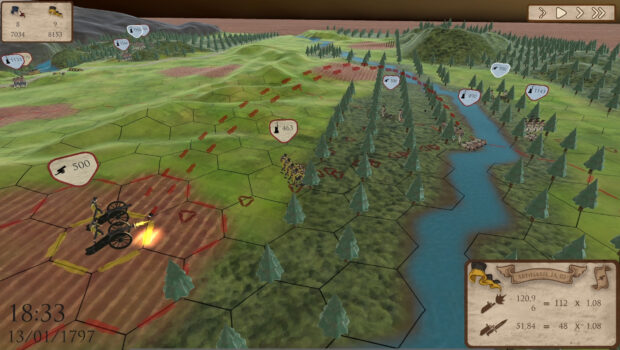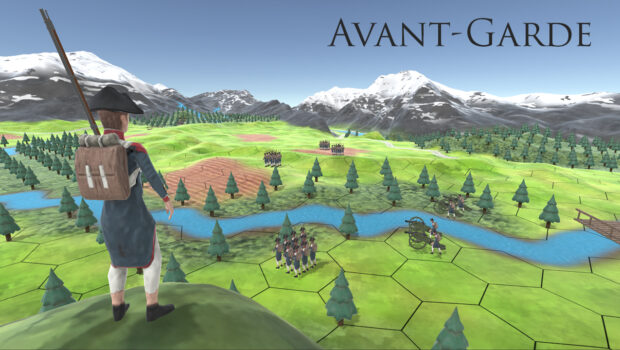Project Introduction
As the game is still a prototype, here are the elements that the vertical slice should contain.The game takes place in real time, on a hexagonal grid. The overall concept is as follows: we play a board game that comes to life in the imagination of the child that we are. So the terrain is actually a board and the soldiers are actually toys. Each unit will be represented in the UI by a card, all of the units in our army therefore forming our deck.
The player takes the place of the leader of one of the armies in conflict during a battle in question. Enemy movements and important events that actually took place during the battle are present (e.g.: arrival of reinforcements, death of a general, explosion of a building, etc.). The player can put his personal knowledge to the test by anticipating enemy movements or making major changes.
Each unit has its own statistics, strengths and weaknesses. Each of them has a special ability (eg: artillery can fire grapeshot instead of cannonballs). Some units clearly have an advantage over others (e.g.: cavalry has a clear advantage over artillery in melee combat).
Troop morale will be an important aspect of the game. It is what will determine the overall effectiveness of a unit, as well as its desire to fight. Several aspects will affect the morale of the troops:
- The presence of a general nearby
- The presence of allies nearby
- Encirclement by the enemy
- Sudden/heavy losses
- etc.
The terrain gives bonuses and/or penalties to units (e.g.: a unit located at height obtains an offensive bonus). This is indicated by the icons on the mouse cursor.
If a unit was hidden during the real battle, it will also be hidden in the game. The player can discover it on his own or by surprise.
In the event that the player steps outside the historical framework of how the battle unfolded, the AI will adjust to their movements and the player will be warned that historical authenticity is no longer guaranteed.
I am currently working with historians to ensure historical authenticity and to get their opinions on the uchronistic aspects of the game. But there is no historical data implemented yet.
Basically, the player can learn about the battle in question or completely ignore the historical aspect depending on whta he wants. In all cases, he will have to deal with the same conditions and resources available as at the time.
Here is what will be historically authentic:
- Number of soldiers
- Uniforms
- Ammunition
- Enemy troop movement
- Major event
- Morale of the troops (overall)
- Land and buildings
- Weather
- etc.
Thus, if the player follows approximately the same movements as his army made during the real battle, the outcome of the battle will be the same as the it has been in the past.
Only some of these aspects are currently present and/or complete in the prototype.
About Developer
I'm a solo-dev. I do about everything except the music and sounds effects (there is none at the moment).The first battles to be implemented in the game are historically will be linked to Canada. For example, the Battle of Quebec and the Battle of Sainte-Foy took place during the Seven Years' War (1756-1763).




